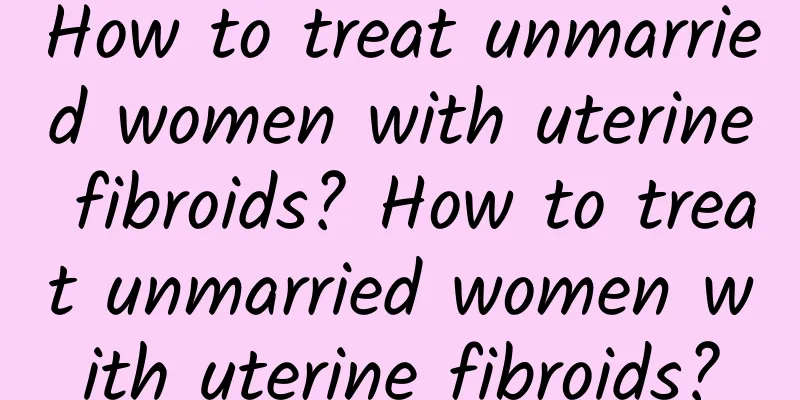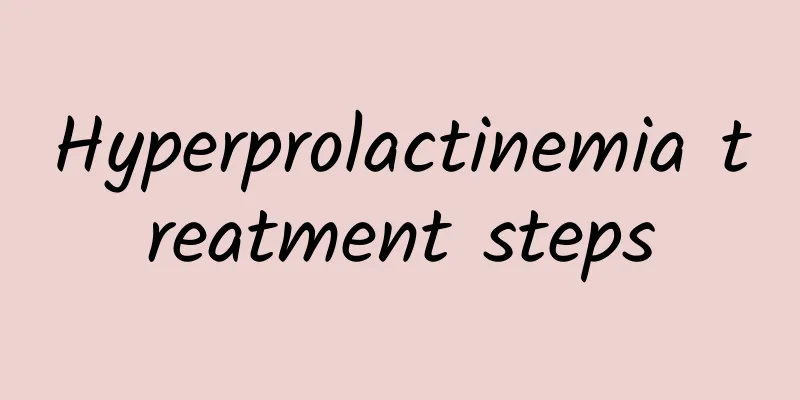How to treat unmarried women with uterine fibroids? How to treat unmarried women with uterine fibroids?

|
Uterine fibroids are a very common gynecological disease. Generally speaking, uterine fibroids are discovered through physical examinations, and patients generally have no obvious symptoms. Some unmarried female friends will be very worried after suffering from uterine fibroids, worrying that it will affect their future fertility, so it is very important to choose a treatment method at this time. 1. Conservative treatment - follow-up observation: This method is more suitable for patients with small uterine fibroids and mild symptoms, especially for women approaching menopause. The sex hormone level of women approaching menopause will gradually decrease, and the uterine fibroids will gradually shrink. Such patients should be followed up regularly for 3 to 6 months to see whether the uterine fibroids have increased, and treatment methods should be formulated according to the condition. 2 Conservative treatment --- drug treatment: This method is more suitable for uterine fibroids that are smaller than the size of a 2-month pregnant uterus, with no obvious symptoms, and when the patient is approaching menopause and cannot undergo surgery. Commonly used drugs include: androgens, gonadotropin-releasing hormone analogs, and anti-progesterone drugs (mifepristone). 3. Surgical treatment resection: This method is suitable for patients who have failed conservative treatment and uterine fibroids with a gestational uterus size of more than 2 months. Uterine fibroids that exceed a certain size will have obvious symptoms, such as secondary anemia. At present, clinical surgical resection methods include: uterine myomectomy, subtotal hysterectomy, and total hysterectomy. For women under 35 years old, who are childless, unmarried, and need to keep their uterus, we will use uterine myomectomy. For women with larger uterine fibroids, suspected lesions, and who do not need to keep their uterus, we will use subtotal hysterectomy and total hysterectomy. 4. Postoperative care - Patients who have undergone total hysterectomy or hysterectomy should pay special attention to vaginal bleeding after surgery, and closely observe the amount and nature of bleeding. Remember to return to the hospital for a follow-up examination after surgery. Control sexual life after surgery to avoid tearing of the surgical wound and causing unnecessary late gynecological inflammation. |
<<: How to treat uterine fibroids during pregnancy? Treatment of uterine fibroids in early pregnancy
Recommend
What are the main causes of vulvar leukoplakia?
What are the main causes of vulvar leukoplakia? I...
Collection! Blindly preserving the fetus may lead to fetal malformation
From a biological perspective, human reproduction...
To cure dysmenorrhea, nursing care must be in place
There are many patients with dysmenorrhea in life...
How to take care of uterine fibroids after surgery? How to take care of uterine fibroids after surgery
I believe that women are not unfamiliar with the ...
What are the treatments for menopause?
What are the treatments for menopause? This is wh...
How to take better care of female cervicitis? What are the common causes of female cervicitis?
How to take good care of cervicitis in women? Cer...
What are the symptoms of moderate cervical erosion? 3 symptoms of moderate cervical erosion
Have you ever heard of cervical erosion? In fact,...
What is the cure rate of dysmenorrhea?
What is the cure rate of dysmenorrhea? Dysmenorrh...
What can't you eat if you have adenomyosis?
Adenomyosis is a cause of concern for people. For...
Which surgery is better for uterine fibroids? Which surgery is better for uterine fibroids?
Uterine fibroids are one of the most common benig...
The causes of cervical erosion at a younger age
In recent years, the incidence of cervical erosio...
What are the symptoms of postmenopausal cervical adhesions?
Symptoms of postmenopausal cervical adhesions inc...
Several common modern treatments for cervicitis
The cervix is a relatively complex organ in the...
How to treat chocolate cysts in unmarried girls
Unmarried girls with chocolate cysts usually need...
What are the prescriptions for Chinese medicine to treat uterine fibroids?
What are the prescriptions for Chinese medicine t...









